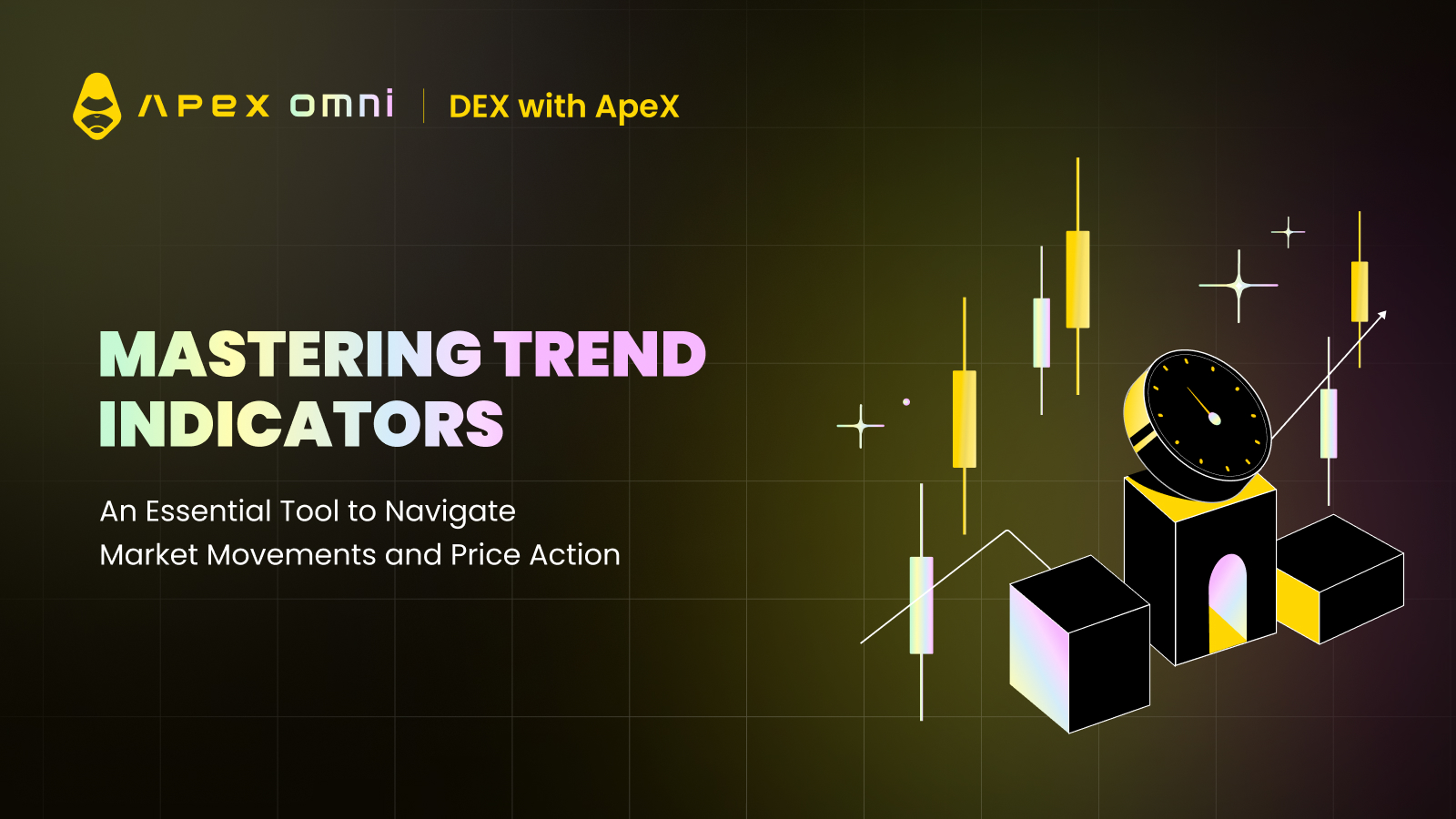In the fast-paced world of cryptocurrency trading, having reliable tools to navigate market movements is crucial. Enter trend indicators — powerful allies that can help traders make sense of price action and market direction.
Designed to help traders identify and follow market trends, trend indicators provide valuable insights about the direction and strength of price movements. By leveraging these tools, traders can make more informed decisions, aligning their strategies with broader market momentum. Whether you're a seasoned trader or just starting your crypto journey, understanding trend indicators can significantly enhance your trading approach.
Properties of Trend Indicators
Trend indicators are essential tools in a crypto trader's arsenal, offering a range of valuable properties. At their core, these indicators excel in providing directionality, helping traders discern whether an asset's price is moving up, down, or sideways. This fundamental insight is crucial for crafting effective strategies and timing market entries and exits.
While most trend indicators are considered lagging indicators, confirming trends after they've begun, this characteristic serves an important purpose. The inherent lag helps filter out market noise and reduce false signals, offering more reliable trend confirmations. Smoothing is another key feature of trend indicators. Many utilize moving averages or similar mathematical techniques to smooth price data, making trends more visible and allowing traders to focus on the bigger picture rather than getting distracted by short-term fluctuations.
One of the most significant strengths of trend indicators is their objectivity. Unlike subjective analysis methods, these indicators provide measures based on mathematical calculations, helping to reduce emotional bias in trading decisions. Lastly, trend indicators offer remarkable versatility. They can be effectively applied across various timeframes, from short-term scalping to long-term position trading. This flexibility allows traders to adapt their analysis to their specific trading style and market conditions.
By combining these properties — directionality, lag, smoothing, objectivity, and versatility — trend indicators provide traders with a comprehensive toolset for navigating cryptocurrency trading.
Applicability of Trend Indicators to Crypto Market Analaysis
Trend indicators are invaluable tools for traders in crypto, helping traders identify and follow significant trends amid rapid price fluctuations, providing a clearer picture of market direction.
A key advantage of trend indicators is their ability to monitor and analyze market movements continuously, even when traders are not actively watching charts. This constant vigilance makes them essential for managing positions and identifying opportunities around the clock.
Particularly adept at identifying macro trends, these indicators help traders align their strategies with broader market directions. This capability is especially useful for longer-term investors and traders aiming to capitalize on major market waves.
Moreover, trend indicators play a crucial role in risk management, a critical aspect of successful crypto trading. By helping traders align with overall market direction, these tools contribute to more effective risk management strategies. Trading in the direction of the trend often increases the probability of successful trades while minimizing potential losses from trading against prevailing market momentum.
Examples of Popular Trend Indicators
In the realm of trend indicators, several tools have gained popularity among crypto traders due to their effectiveness and reliability. Here are some of the most widely used trend indicators:
Moving Averages (MA): Simple and exponential moving averages help smooth out price action and identify trends.
Moving Average Convergence Divergence (MACD): This indicator uses the difference between two moving averages to identify trend direction and momentum.
Ichimoku Cloud: This complex indicator provides information about trend direction, support and resistance levels, and potential reversals.
Parabolic SAR: This indicator is particularly useful for identifying potential trend reversals and setting trailing stop-losses.
Essential Considerations When Using Trend Indicators
Effective use of trend indicators in crypto trading requires a nuanced approach. A key consideration is timeframe consistency, with successful traders ensuring their chosen indicators align with their overall strategy. Many adopt a multi-indicator approach, skillfully combining different trend indicators to confirm signals and minimize false positives.
Market context plays a crucial role in this analytical process. Savvy traders consider not just technical indicators, but also broader market conditions and fundamental factors. They recognize that trend indicators may falter in ranging or choppy markets, and are prepared to pivot to alternative analysis methods when necessary.
The inherent lag in most trend indicators presents both an advantage and a challenge. While it helps confirm trends, it can also lead to delayed entries or exits. Experienced traders factor this lag into their decision-making process, striking a balance between confirmation and timeliness.
In the rapidly evolving crypto landscape, regular calibration of indicator settings is essential. This ongoing refinement ensures that these tools remain effective amidst changing market dynamics. By carefully weighing these considerations, traders can leverage the full potential of trend indicators while mitigating their limitations. This balanced approach leads to more informed trading decisions, crucial for navigating the volatile and dynamic world of cryptocurrencies.
Trend indicators are invaluable tools for crypto traders, offering objective insights into market direction and strength. By understanding their properties, applicability, and limitations, traders can effectively incorporate these indicators into their strategies to navigate cryptocurrency markets.
However, it's crucial to remember that trend indicators are just one piece of the trading puzzle. The most successful traders often combine these indicators with other forms of analysis, risk management techniques, and a deep understanding of market dynamics. For a recap on momentum indicators, volume indicators and volatility indicators, head to ApeX Blog.
Stay tuned for future articles where we'll dive into more detailed explanations of more key technical indicators. Remember to do your own research, manage risks carefully, and never invest more than you're willing to lose. Happy trading!

